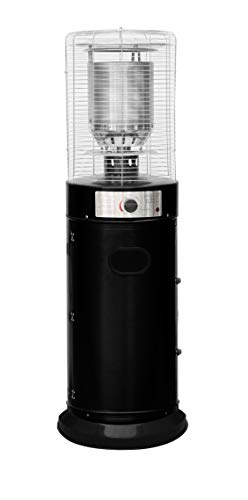10 Healthy Habits For A Healthy Buy Patio Heating
The Essential Guide to Buying Patio Heating: Everything You Need to Know
As the weather turns cooler, lots of property owners begin to think about how to extend their outdoor home into the chilly months. Patio heating enables cozy gatherings under the stars, improving year-round usability of patios, decks, and gardens. This post will supply an extensive overview of patio heating options, factors to think about when purchasing, and answers to frequently asked concerns.
Types of Patio Heaters
Patio heaters come in different designs and performances, each accommodating various user requirements. Here's a breakdown of the most popular options:
1. Propane Patio Heaters
- Description: These portable heaters run on propane gas cylinders.
- Benefits:
- Easy to move and establish.
- Supplies instantaneous heat.
- Ideal for bigger outdoor areas.
- Factors to consider:
- Requires regular refilling of propane tanks.
- May be restricted by local policies on outdoor gas appliances.
2. Natural Gas Patio Heaters
- Description: Connected straight to a gas line.
- Benefits:
- No need for refilling; a continuous supply of hot gas.
- Affordable in the long term for regular usage.
- Factors to consider:
- Requires professional installation.
- Less portable than propane heaters.
3. Electric Patio Heaters
- Description: Heaters powered by electrical power.
- Advantages:
- Easy to set up and utilize; simply plug them in.
- Suitable for little events and limited outdoor areas.
- Considerations:
- Less powerful than gas heaters; might not heat large locations efficiently.
- Needs access to electrical outlets.
4. Infrared Heaters
- Description: Heaters that utilize infrared technology to warm objects and individuals directly instead of heating the surrounding air.
- Benefits:
- Highly energy-efficient and environmentally friendly.
- Instantaneous heat without waiting.
- Factors to consider:
- Effectiveness can be limited by wind.
- Typically more expensive than conventional heaters.
5. Fire Pits and Tabletop Fireplaces
- Description: Open flame systems that can also act as stylish outdoor decoration.
- Benefits:
- Multifunctional; provides heat and ambiance.
- Considerations:
- Requires consistent guidance and upkeep.
- Less efficient heat distribution compared to other heaters.
Aspects to Consider When Buying Patio Heaters
Buying patio heating needs cautious consideration to ensure you acquire an unit that meets your specific needs. Below are essential factors to assess:
Size of the Area:
The primary factor to consider is the size of the outdoor space you wish to heat. Larger patios may need more powerful heaters or multiple units to disperse warmth efficiently.Heating Capacity:
This is determined in BTUs (British Thermal Units). Normally, higher BTU ratings show a heater that can produce more heat.Mobility and Placement:
Determine whether you prefer a portable service or a repaired setup. Think about where you plan to place the heater, and how often you might require to move it.Fuel Source:
Evaluate your preference for propane, gas, or electric models based on accessibility and convenience. Each fuel type has associated costs and factors to consider.Safety Features:
Opt for designs equipped with safety features such as tip-over defense and automatic shut-off. Highly recommended Online site is essential when using heaters in outdoor spaces.Style and Aesthetics:
Choosing an aesthetically appealing heater can boost your outdoor environment. just click the up coming post for options that match your existing furniture and design.Weather Resistance:
If the heater will stay outdoors all year, think about designs designed to endure different weather condition elements such as rain or snow.
Comparison Table of Patio Heaters
Type
Heat Source
Portability
Rate Range
Pros
Cons
Propane Patio Heaters
Propane Gas
High
₤ 100-₤ 400
Instantaneous heat, portable
Requirements refilling, local regulations
Natural Gas Heaters
Natural Gas
Low
₤ 300-₤ 700
Continuous supply, cost-efficient
Needs installation
Electric Patio Heaters
Electrical energy
High
₤ 50-₤ 300
Easy to utilize, no fuel needed
Restricted range and heat
Infrared Heaters
Electricity
Medium
₤ 150-₤ 500
Efficient, instant heat
Wind results, greater expense
Fire Pits/ Fireplaces
Wood/Gas
Variable
₤ 100-₤ 600
Decorative, multifunctional
Needs supervision, upkeep
Frequently Asked Questions About Patio Heating
1. How lots of BTUs do I require for my patio?
The variety of BTUs required depends on the size of your patio. A general standard is:
- Up to 20 sq feet: 10,000 BTUs
- 20-50 sq ft: 20,000 BTUs
- 50-100 sq ft: 30,000 BTUs
2. Are patio heaters safe to use?
Yes, as long as security guidelines are followed. Search for heaters with safety features and ensure they are operated in well-ventilated areas.
3. Can electric patio heaters be used inside?
It is not suggested to use outdoor heaters inside your home due to the threat of fire and carbon monoxide buildup. Constantly confirm maker standards.
4. What is the average expense to run a patio heater?
Operating expenses differ extensively based on the kind of fuel and energy costs in your location. For electrical systems, typical use might cost around ₤ 0.07-₤ 0.30 per hour.
5. How do I maintain my patio heater?
Regular upkeep includes clearing out any debris, checking gas connections for leakages, and ensuring that electrical parts are safe and functioning.
Investing in patio heating is an outstanding way to extend the pleasure of outdoor spaces well into the cooler months. With Highly recommended Online site , possible purchasers should examine their unique requirements, space measurements, and preferred heating methods. By thinking about the factors and comparisons presented in this short article, house owners can make a well-informed decision and ensure their patio stays a comfortable social hub throughout the year.
